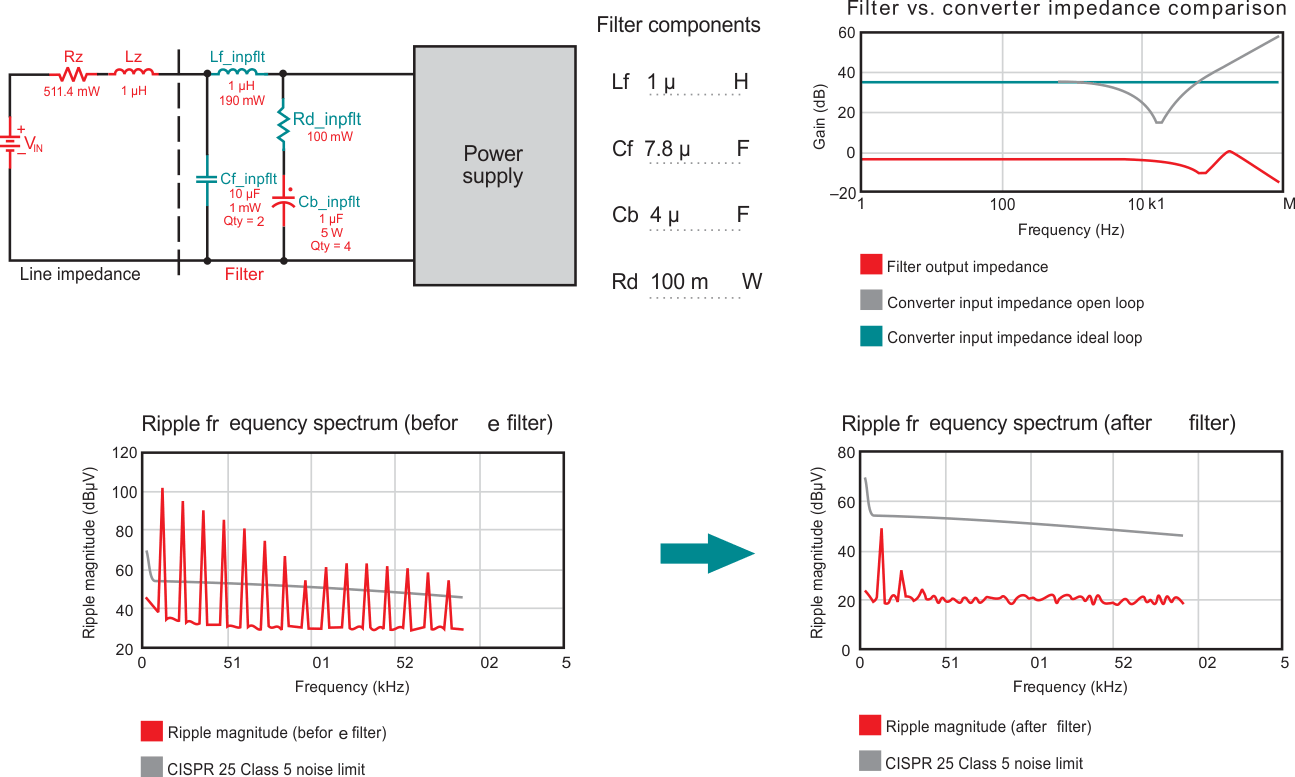SLYY200A April 2021 – December 2023 LM25149 , LM25149-Q1 , LM5156-Q1 , LM5157-Q1 , LM53635-Q1 , LM60440-Q1 , LM61460-Q1 , LM61495-Q1 , LMQ62440-Q1 , LMR33630-Q1 , LMS3655-Q1 , TPS55165-Q1 , UCC12040 , UCC12050
- 1
- Overview
- At a glance
- What is EMI?
- Conventional methods to reduce EMI in the low- and high-frequency ranges
- Innovations in reducing low-frequency emissions
- Spread spectrum
- Active EMI filtering
- Cancellation windings
- Innovations in reducing high-frequency emissions
- HotRod™ package
- Enhanced HotRod QFN
- Integrated input bypass capacitor
- True slew-rate control
- EMI modeling capabilities
- Low-frequency EMI designs using WEBENCH® design tool
- Conducted and radiated EMI results published in data sheets
- Conclusion
- Keep product categories for low EMI
Low-frequency EMI designs using WEBENCH® design tool
The WEBENCH input filter design tool helps you automatically design a proper input filter to mitigate lower-frequency (<30 MHz) conducted EMI noise for compliance standards like CISPR 32 and CISPR 25. The tool optimizes filter size while ensuring that the design complies with a particular standard. It also ensures filter stability and converter-loop stability while designing the filter. This online tool supports over 100 TI power devices.
It is a common mistake to leave an input EMI filter inductor undamped, which negatively affects overall design stability. The WEBENCH design tool performs impedance analysis on the input filter and SMPS (as shown in Figure 24) and suggests the appropriate damping component to ensure stability.
 Figure 24 Input EMI suggestion with impedance analysis in the WEBENCH® design
tool.
Figure 24 Input EMI suggestion with impedance analysis in the WEBENCH® design
tool.